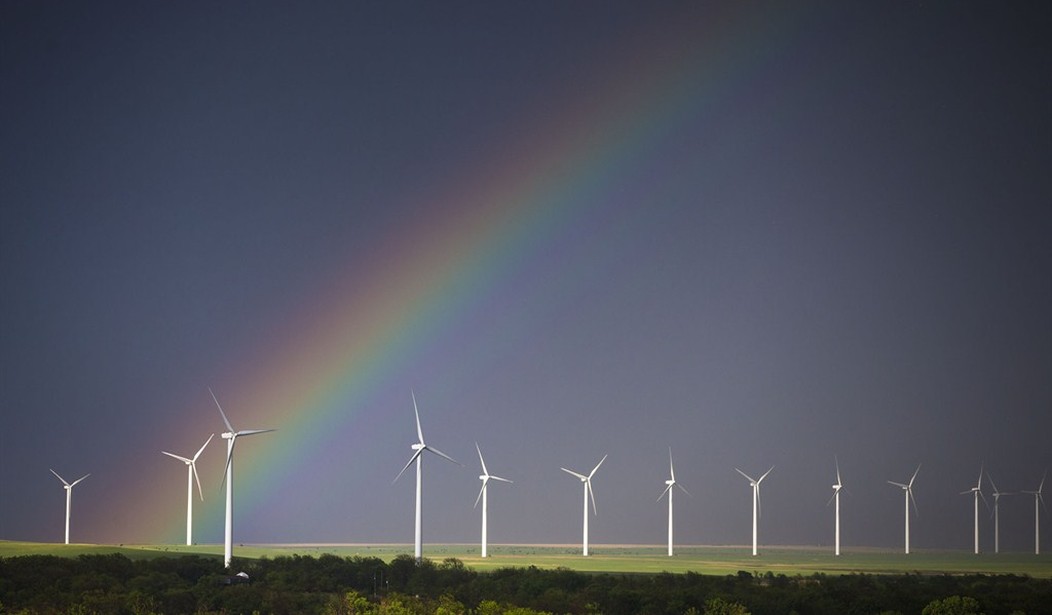Right before Christmas, a federal judge put the bow on a present twelve years in the making for the Osage Nation of Oklahoma.
The Osage Nation won a massive ruling in Tulsa federal court on Wednesday that requires Enel to dismantle a 150-megawatt wind project it built in Osage County despite the tribe’s repeated objections. The tribe’s fight against Rome-based Enel began in 2011 and is the longest-running legal battle over wind energy in American history.
The Osage had been furiously and unrelentingly fighting the wind farm – Osage Wind – tooth and nail since word of the project first broke.
…The Osage Nation filed a federal lawsuit in October 2011 seeking to halt the construction of the wind farm, alleging that the project unlawfully deprived the Osage Nation of access to and the right to develop the mineral estate.
The nation’s claims were denied, and the case was dismissed on merits.
The defendants began leasing surface rights for the project in 2013, according to the ruling.
The wind farm includes 84 turbines spread across 8,400 acres of leased surface rights in Osage County, underground lines, overhead transmission lines, meteorological towers and access roads, the ruling said.
Construction on the wind towers began in October 2013, with excavation for the towers beginning in September 2014.
What tripped the wind company up was arrogance. How many times have we seen that before?
The Osage Nation might not have owned all the property, but they did hold title to all the mineral rights under the windfarm and the area required for maintenance roads, etc., ever since buying the land from the Cherokees in the late 1800’s.
As far back as 2011, at the very beginning of the project, the superintendent of the Bureau of Indian Affairs wrote a letter to the company warning them not to violate the tribe’s mineral rights when construction started or during any part of the build-out.
…In 2011, according to an article by Benny Polacca of the Osage News, the superintendent of the Bureau of Indian Affairs in Pawhuska wrote a letter to the tribe four days after the Osage County Board of Adjustment approved a variance request for the wind project. The BIA official warned that the project “may have to be removed or relocated” if it interferes with the tribe’s mineral estate. Despite that warning, Enel began building the wind project in 2013. As seen below, on October 9, 2014, the BIA sent a letter to Enel telling it to “refrain from any further excavation of minerals” for the wind project “until such time that you have obtained a Sandy Soil Permit through the Osage Agency. Failure to comply may result in this matter being forwarded to the Office of the Field Solicitor for further action.”
Ignoring that warning, others which came later, and disregarding repeated subsequent orders to acquire a mining lease and stop the mineral violations were to prove Enel’s undoing. And it is going to cost them big time.
…The decision by U.S. Court of International Trade Judge Jennifer Choe-Graves is the culmination of 12 years of litigation that pitted the tribe and federal authorities against Enel. During the construction of the project, the company illegally mined rock owned by the tribe, and it continued to do so even after being ordered by the Bureau of Indian Affairs to stop. Instead of halting work, the company sped up construction. Enel must now remove the 84 turbines that it built on 8,400 acres of the Tallgrass Prairie located between Pawhuska and Fairfax.
Removing the turbines will cost Enel some $300 million.
Under the Osage Allotment Act of 1906, the tribe owns the rights to the minerals beneath the land it bought from the Cherokee Nation in the late 1800s. Those mineral rights include oil, natural gas, and the rocks that Enel mined and crushed for the wind project. By mining without permission, the company violated the tribe’s sovereignty. Choe-Graves concluded that Enel “failed to acquire a mining lease during or after construction, as well as after issuance of the 10th Circuit Court of Appeals’ decision holding that a mining lease was required” in 2017. She continued, saying the company’s “past and continued refusal to obtain a lease constitutes interference with the sovereignty of the Osage Nation and is sufficient to constitute irreparable injury.
420 foot high towers – 84 of the abominations. GONE
Beauty.
Enel is also going to be on the hook for hundreds of millions in damages to the Osage besides simply the removal costs.
Schweet.
It’s been a long, fierce fight for the Osage, even once being dismissed by the Supreme Court. But they never stopped going after the wind farm company.
…“I hope no other tribe has to do what we had to do,” Waller said, referring to the long court battle.
“This is a win not only for the Osage Minerals Council; this is a win for Indian Country,” Waller said.
“There are a lot of smaller tribes that couldn’t have battled this long, but that’s why we’re Osages,” Waller said. “We’re here, and this is our homeland, and we are going to protect it at all costs.”
Dogged determination, knowing your rights, and that you’re right really does pay off sometimes.
Bravo Zulu, Osage.








Join the conversation as a VIP Member